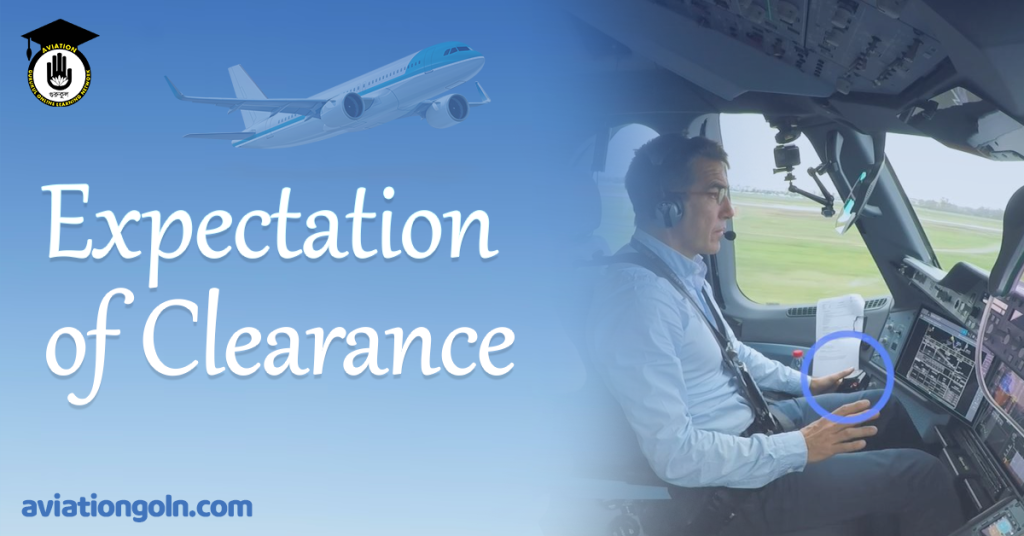Expectation of Clearance
Expectation of Clearance
Description
Many situations in air traffic control are repetitive and result in pilots expecting that a particular clearance will be given, because:
- That particular clearance is habitually given in similar situations; or,
- That clearance is stipulated in the Flight Information Publications.
Hazards
If clearance is given that differs from the expected clearance, the pilot may read back the clearance correctly but perform the expected clearance.
Alternatively, the pilot may read back the expected clearance, but the error may not be noticed by the ATCO.
Typical Scenarios
- The standard instrument departure (SID) specifies a climb to 5,000 ft. The pilot is cleared to 4,000 ft. The pilot correctly reads back the clearance but climbs to 5,000 ft (Level Bust).
- The pilot is normally cleared to follow a specific taxi route to the stand, which involves no stops. The ATCO clears the pilot to taxi by a different route and instructs him/her to wait at a particular point. The pilot fails to stop at the specified point.
Related Accidents and Incidents
On 11 October 2012, the crew of a Ryanair Boeing 737-800 did not change frequency to TWR when instructed to do so by GND whilst already backtracking the departure runway and then made a 180° turn and took off without clearance still on GND frequency.
Whilst no actual loss of ground or airborne safety resulted, the Investigation found that when the Captain had queried the receipt of a take-off clearance with the First Officer, he had received and accepted a hesitant confirmation.
Crew non-compliance with related AIP ground maneuvering restrictions replicated in their airport briefing was also noted.
On 2 March 2017, a DHC8-200 took off from Kangerlussuaq in normal day visibility without clearance and almost immediately overflew three snow clearance vehicles on the runway.
The investigation identified several likely contributory factors including a one-hour departure delay which the crew was keen to reduce to remain within their maximum allowable duty period and their inability to initially see the vehicles because of the runway downslope.
No evidence of crew fatigue was found; it was noted that the vehicles involved had been in contact with TWR on a separate frequency using the local language.
On 12 April 2013, a Ryanair Boeing 737-800 took a climb clearance intended for another Ryanair aircraft on the same frequency.
The aircraft for which the clearance was intended did not respond and the controller did not notice that the clearance readback had come from a different aircraft.
Once the wrong aircraft began to climb, from FL360 to FL380, a TCAS RA descent occurred due to traffic just being transferred to a different frequency and at FL370.
That traffic received a TCAS RA to climb. STCA was activated at the ATS Unit controlling both Ryanair aircraft.
On 18 June 2010, an ATR 42 began daylight take-off on runway 28 at Zurich without ATC clearance at the same time as an A340 began to take off from intersecting runway 16 with an ATC clearance.
ATC was unaware of this until alerted to the situation by the crew of another aircraft that was waiting to take off from runway 28, after which the ATR 42 was immediately instructed to stop and did so before the runway intersection whilst the A340 continued departure on runway 16.
On 16 February 2008, during daylight and in poor visibility, a Boeing 747-400, operated by Japan Airlines, was holding on a taxiway next to runway 01R of New Chitose Airport, Japan.
A Douglas MD-90-30 operated by the same airline landed on the same runway and was still on the runway when the B747 was cleared to line up and wait.
Shortly after the lineup, the B747 began its takeoff roll without receiving such clearance and subsequently was instructed to abort the takeoff. The crew of the B747 successfully rejected the takeoff.
Contributory Factors
- Repetitive rostering of pilots on the same route schedules, so that they become over-familiar with them;
- Pass non-standard clearances when standard clearances exist and are satisfactory.
Solutions
- Issue standard clearances whenever possible;
- If a non-standard clearance is necessary, this status must be emphasized.
Related Articles
- ATC Clearance
- Clearances for Departing and Arriving Aircraft
Read more:
Clearances for Departing and Arriving Aircraft
Communication Failure: Guidance for Controllers
Blocked Transmissions / Undetected Simultaneous Transmissions (USiT)

